
Planning to import and sell leather bags, wallets, jackets or other leather products in the European Union? In this article, we cover the EU regulations, including labeling, certification, and testing requirements that are applicable to leather products.
Mentioned Products
- Leather shoes
- Leather wallet
- Leather bags
- Leather clothing
- Leather furniture
- Leather watch straps
Content Overview

FREE CONSULTATION CALL (US, EU & UK)
- Request a free 30-minute call with Ivan Malloci to learn how we can help you with:
- Find product requirements
- Certification and labeling
- Lab testing
General Product Safety Directive (GPSD)
The General Product Safety Directive (GPSD) aims at protecting consumers’ health and safety. It is applicable to any product that is placed on the EU market – either by European manufacturers or businesses importing products from outside the EU. The GSPD is also applicable to leather products, including furniture, shoes, and bags.
GPSD requires that importers and manufacturers assess product safety and risks to ensure that the product is not posing risks or threats to consumers. This assessment shall not be limited to adult consumers, but also the usage and behavior of children and infants.
Indeed, the risk profile is very different when importing basic products like wallets, compared to potential fire hazards such as furniture. That said, you must consider general safety regardless of the type of leather product you’re selling.
GPSD Documentation
We recommend importers to create a risk assessment document for their leather products to prevent accidents and health issues.
GPSD Testing
GPSD does not require third-party lab testing. However, you can still work with a testing company to test your product and verify general product safety.
CE Marking
If your product is covered by any CE marking directives, you are required to have the CE marking on your product. However, the GPSD is not a CE marking directive itself.
REACH
REACH is a regulation that applies to the substances contained in products manufactured or imported into the EU. REACH restricts chemicals, heavy metals, and pollutants in all consumer products including leather wallets, shoes, jackets, furniture covers, and other related products.
It is illegal to import leather products to the EU if the materials contain excessive amounts of substances regulated by REACH. Further, some leather products are treated with coatings that sometimes contain excessive amounts of restricted chemicals and heavy metals.
Here are a few examples of regulated substances:
- Mercury
- Cadmium
- Lead
- Leather dust
Substance of Very High Concern (SVHC)
SVHC list all restricted substances under REACH regulation. The European Chemicals Agency (ECHA) updates the list on a non-regular basis., Note that only a third-party lab testing can allow you to assess if your product contains an excessive amount of substances regulated by REACH.
Lab testing
REACH compliance testing can be performed by testing companies, such as QIMA, TUV, Bureau Veritas, and SGS.
You shall instruct your supplier about the REACH compliance requirements and book third-party testing before the product is shipping to the EU.
Testing companies
Here are some well-known companies offering REACH compliance testing of leather and other materials:
- TUV
- Intertek
- C&K Testing
- SGS
- QIMA
You can find more companies in this guide.
Costs
REACH testing can cost $200 per material, however, the exact quotation depends entirely on the number of different colors, material, and product type.
Learn more
Find more information about REACH lab testing in this guide.
Risks
Artificial leather (e.g. PU) may contain excessive amounts of REACH regulated substances, such as lead and mercury. This is also the case for coatings, dyes and printing inks used on authentic leather.
Leather Furniture Regulations
There are two types of furniture standards applicable to leather furniture in the EU, harmonized standards and national standards. Both standards apply to leather furniture sold in the European Union.
Notice that the applicable regulations depend on the following factors:
- Type of furniture (e.g. upholstered, non-upholstered)
- Material (e.g. Cover fabric, foam, and other filling materials)
- Area of usage (e.g. Residential, commercial or public usage)
Harmonized Standards
- EN 1021-1: Ignition source smoldering cigarette (Link)
- EN 1021-2: Ignition source match flame equivalent (Link)
National Standards
National standards may apply in addition to the harmonized standards. Here are some examples of national standards in the EU:
- DIN B1: Germany
- NFP 92 – 503: France
- BS 5852:1990: United Kingdom
- CSR RF 1/75 A: Italy
We recommend you to confirm all applicable harmonized and national standards for your leather furniture by contacting your local authorities.
Furniture Flammability Lab Testing
Some testing companies such as Intertek, QIMA and Bureau Veritas, provide flammability testing services. We recommend you always book a third-party flammability testing for leather furniture products.
EU Leather Labeling Rules
The EU set up regulations for clothing and footwear labeling which are applicable to leatherwear and footwear.
In addition, some EU member states such as France and Italy have introduced national labeling systems for certain leather products.
a. Leather Clothes
The textile products’ labeling regulation states that the use of leather must be clearly labeled on the products. For example, if necessary you shall include a notice in the label that specifies that your product “Contains non-textile parts of animal origin.”
Additionally, you must also follow the basic labeling requirements of textile products and provide the following information:
- General product information
- Material content
- Warning label
- User instructions
- Care label
The label should be attached or printed permanently on the products and visible to consumers.
b. Footwear
The labeling of leather shoes is regulated by Directive 94/11/EC (Footwear Directive). The leather shoe label should include the information as below:
- Material description of the footwear
- Written indications for leather
- Country of origin
The label must be visible, securely attached to at least one article of footwear in each pair.


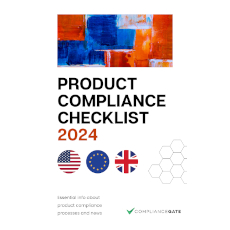

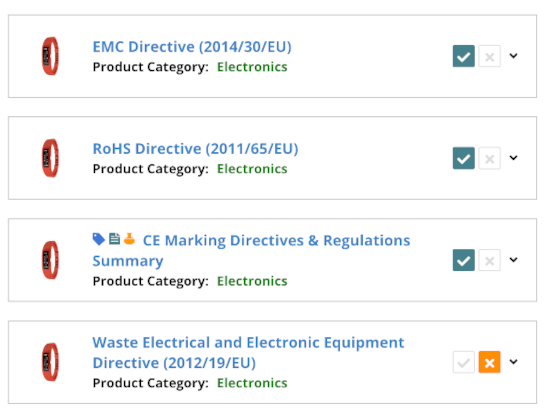




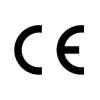
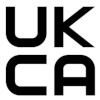




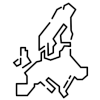


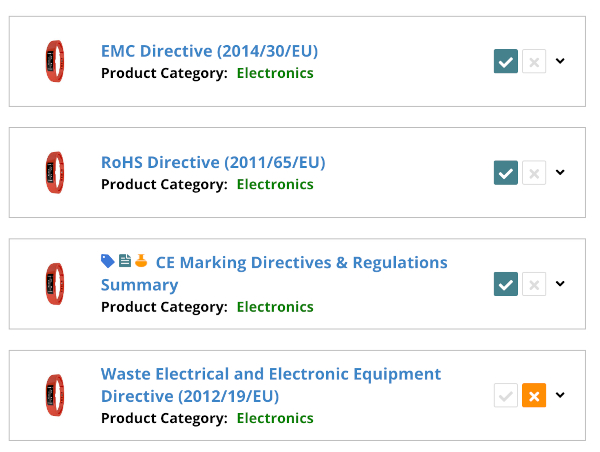

If I have a an all cotton product but just the zipper pull is pureleather and is also removable, how do I need to label that?
We have been the manufacturer of Leather apparel since 1972: Blue Star Manufacturing Pvt Ltd in Pakistan. And we are registered with ISOs. So my question is if we export our leather apparel like leather Jackets, Vests, Boots, Gloves. Is there any export requirement for the EU? We already exporting USA, Canada, and Australia..
Hi Jawad,
Not sure what you mean by export requirements, but there are compliance requirements (REACH, GPSR labels etc).
Hi, I am not 100% convinced about leather clothing labelling requirements. The Textile Regulation refers to products that “contains non-textile parts of animal origin.” (animal bones or pearls). However, Textile Regulation refers to material composition (fibre names list) and the weight of fibres (80%). And to my understanding leather (genuine) products (jacket, trousers, wallets). Please share your opinion in that. Thank you!
HI, I clicked on “post comment” too fast. the missing part is “And to my understanding leather (genuine) products (jacket, trousers, wallets) are then not to be labelled in accordance with Textile Regulation). What about the GPSD then?
Hi Iga,
We will need to look into this, but it might be in the context that (for example) a leather jacket might have textile parts. Also, I cannot say if there are any leather-related standards harmonised under GPSD.
The textile labelling regulations are for products containing at least 80 % by weight of textile fibres so the leather items mentioned in this article would not be within the scope. If a textile product like a suit jacket contained leather, then there needs to be statement that the product contains non-textile parts of animal origin. If a consumer buys a Leather jacket, then i assume they know what they are buying and it doesn’t actually require any labelling but any statement made must not be misleading.
How can i find out europe requirements of leather products
Hi Akmal,
The article is about leather product requirements in the EU